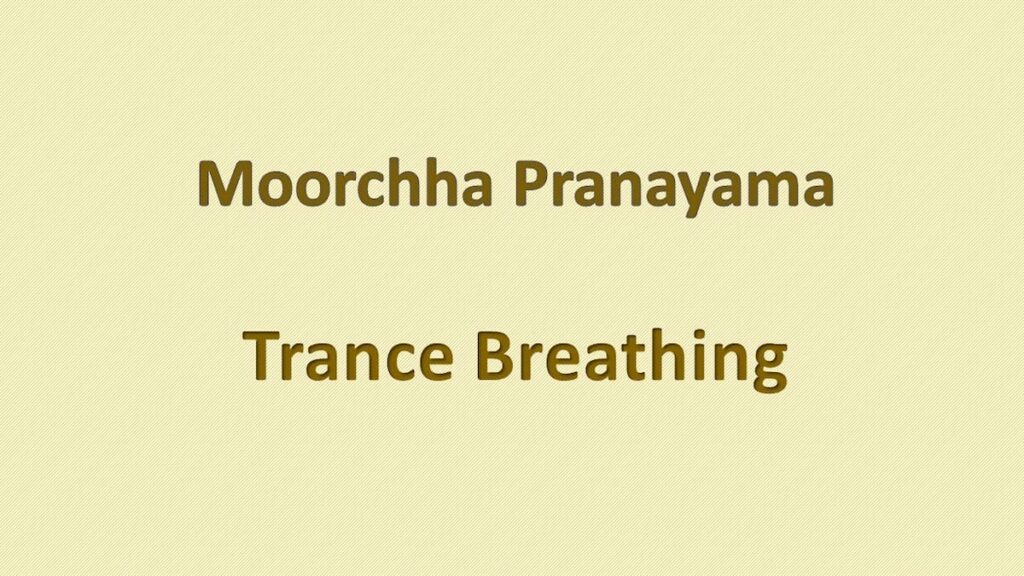Overview
Moorchha Pranayama (aka Murcha Pranayama) is one of the eight Classic Pranayama Techniques. It is one of the advanced types of breath control technique that involves the concurrent practice of Mudras and Bandhas. (Mudras are symbolic gestures of fingers, hands, and other body parts whereas Bandhas are yogic seals.). This Pranayama leads to Samadhi. Moreover, it is the perfect tool for attaining advanced stages of meditation.
Moorchha Pranayama Meaning
Moorchha is the Sanskrit word for the mental state of fainting. However, the practice is to attain the state of semi-fainting rather than a complete state of fainting or unconsciousness. In other words, this practice is to learn to attain Unconsciousness consciously. It is one way of expanding the consciousness to accommodate more Prana.
In English, the method gets the name Fainting Breath, Swooning Breath, or Trance Pranayama.
Moorchha Pranayama Steps
According to Hatha Yoga Pradipika, Perform Jalandhar Bandha at the end of inhalation and then exhale slowly.
Pūrakānte ghādhataram baddhvā jālandharam śanaih Rechayenmūrchchākhyeyam manomūrchchā sukhapradā Closing the passages with Jâlandhar Bandha firmly at the end of Pûraka, and expelling the air slowly, is called mûrchhâ. Because it makes the mind to swoon and gives comfort. Verse II-69 of Hatha Yoga Pradipika
Similarly, Hatha Tattwa Kaumudi, another medieval yoga text, describes the technique with Jalandhara Bandha or Throat Lock. Inhale, retain the air with the Throat Lock, and exhale slowly maintaining the Throat Lock. This text calls it Manomurchha which leads the Yogi to the state of swooning.
Gheranda Samhita gives a different procedure that does not contain a Throat Lock. After mastering breath retention, withdraw the mind from all objects and fix it in the eyebrow center. This causes the fainting of the mind and gives happiness. The union of mind and Atman gives bliss.
However, I give below the steps that are used by contemporary Yogis.
Step 1
Sit in a yoga pose for meditation. Keep the body straight to keep the head, neck, and back in one line. Put your palms on your thighs facing upward or perform Chin Mudra or Gyan Mudra. Breathe slowly for a couple of minutes.
Step 2
Next, inhale slowly and perform Jalandhra Bandha (Neck Lock) at the end of inhalation. Slowly tilt the head and touch the upper part of the chest with your chin while inhaling. Your chin should touch the upper part of the chest at the end of inhalation. This is Neck Lock.
Step 3
Then, perform breath retention according to your capacity while maintaining the Neck Lock.
Step 4
Subsequently, exhale slowly releasing the neck lock.
Step 5
At the end of the exhalation, perform Shambhavi Mudra. Fixing your eyes and mind at your eyebrow center is Shambhavi Mudra. During this step, assume slow breathing. After some time, repeat all the steps again and again until you get the feeling of fainting. If you get the feeling of swooning, retain the Shambhavi Mudra and don’t repeat the other steps.
Moorchha Pranayama Benefits
- The practitioner experiences lightness and peace in his body and mind. Hence, it is helpful in conditions like insomnia. Also, it helps to have a sense of euphoria and inner joy.
- Moreover, it alleviates or lessens the mental state of stress, anxiety, anger, and tension.
- It prepares the practitioner for the advanced stages of meditation.
- Also, it activates the Parasympathetic Nervous System which is helpful for good physical and mental health.
- It helps to conserve the pranic energy. According to some Yogis, this practice activates the Bindu Chakra which is vital for a healthy body and mind.
Bottom Line
Murchha Pranayama can be helpful only when it is performed with prescribed Mudras and Bandhas along with breath retention. Hence, it is a technique meant for advanced yoga practitioners. Beginners of Yoga should not attempt this. They should take Moorchha Pranayama only after the mastery of other breath control practices. However, one should note that it is contraindicated in conditions like high blood pressure, brain disorders, epilepsy, and cardiac issues.
